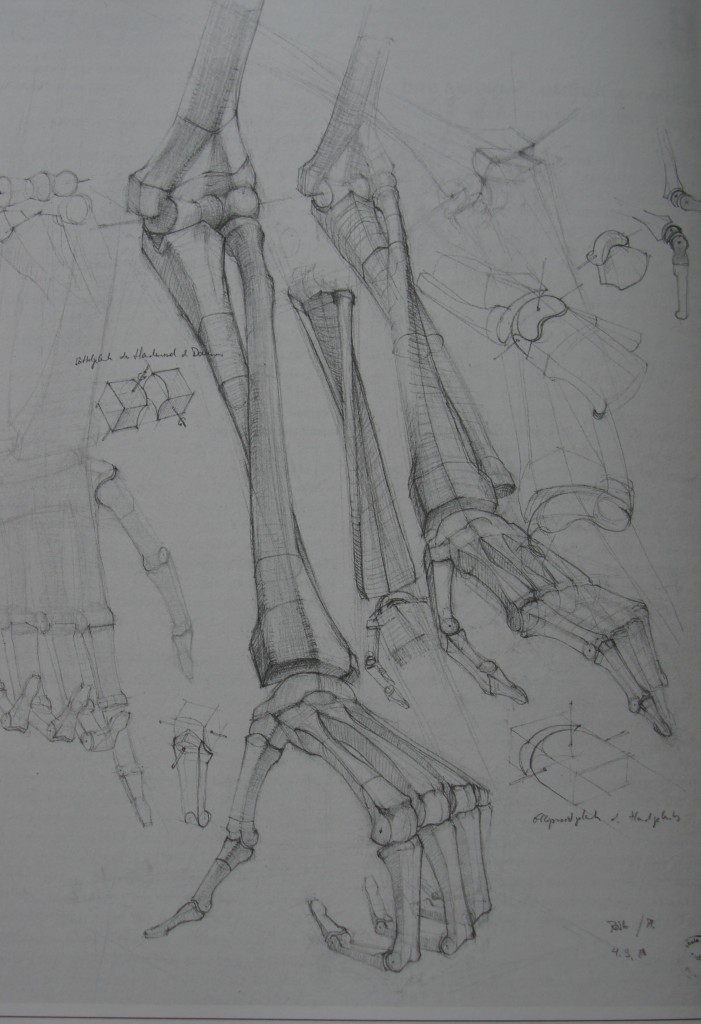There is still plenty of figurative art being done today but we never see or hear of it in the media. It has been eclipsed perhaps because no one writing about art now has the experience to look at it and make sensible judgments about it. As observation has been the main stay of art for the previous 40,000 years we are clearly living through a long hiccup in a major and important field of human activity. Why?
As a student I subscribed to the growing interest in abstraction. Art seemed to be returning to an area that had fallen into neglect in the late 19thC. Brancusi and Picasso seemed to be reconnecting with an element in primitive art that demonstrates the abstract nature of thought resulting from the triumph of word and number. Human knowledge is transmissible and can therefore develop through time as a result of these abstract systems. That said, art is one of the few areas where we can confront and compare nature with what we think we see; we are often surprised. I see observed art as constructing bridges between the abstract nature of our minds and the complexities of the outside world.
The study of primitive and child art can teach us a lot about the way the mind twists the evidence. The advanced study of drawing used to recommend a number of ways in which we could learn to correct some of the loss that inevitably results from abstraction. Now alas, we have the situation where abstract art is matched with nothing. It is beyond criticism, in a world of its own. Our response to the outside world is visibly deteriorating as a result; particularly in the field of response to our fellow humans. Body-language is often misread which was once reliable and instinctive. This developing loss of touch with reality could endanger our survival as a species. (The catastrophe of Rembrandt scholarship over the last 50 years in de-attributing half his genuine works is a forceful reminder of our loss.)
This brings me to the point where I must attempt an answer to my initial question. The change in the course of art coincides with the rise of art history as a deciding power in art. Previously an artist’s fame was influenced by their standing with their peers, now it is decided by the mass-media directed by art experts who paradoxically know little of what has driven artists in the past. A paradoxical result of introducing professional art historians into British art schools is that a noble history of Man’s endeavor over 40,000 years has been cut down to the last 50. So recent students no longer feel that brotherhood of artists: that conversation with the past that frequently leads to genuine originality.
This essay was triggered by chancing upon a book on drawing “ Studien zur Gestalt des Menschen” (Urania 2005) by Gotfried Bammes. He reproduces splendid drawings by his students on various courses in the German speaking world. Such a book would be near impossible in the English speaking world, we are far too individualistic, aiming at novelty rather than that long established quality that we find here. Congratulations Herr Bammes for keeping civilization alive in difficult times!

An anatomy drawing by a nameless second year student at art school
Many illustrious artists have wrestled with such subjects in the past. For sensitivity to the quality of bone, to the articulation of the joints and the movement in space I do not think this has ever been bettered. Talent still exists but not the ability to promote it; because we have left that in the hands of a band of deluded experts. We, who do not profit from their delusion recognize it to be a ludicrous scam from which we can only lose (through our pension funds as well as the emptiness of our museums of modern art.) The vast sums spent on encouraging establishment art discourages the eclipsed majority of artists.
Value in art is now dictated by the auctioneers and their gambling clients, who are probably unaware of the damage they are inflicting on civilization.